Adam Smith
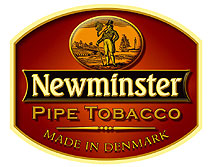 It is not every day a new blend is released. It is an even rarer occasion that an entire new line of tobacco is presented. But that is exactly what the people at the Villiger Tobacco Company, in conjunction with the Mac Baren Tobacco Company, have done. Many people have commented or speculated on the branding and even the blending recipes seeming to resemble another, already established brand of blends; however that is not my purpose. Personally, while I find the business side of tobacco fascinating, my goal is to simply explain my experiences with this new brand, and give you an idea as to what you are in for.
It is not every day a new blend is released. It is an even rarer occasion that an entire new line of tobacco is presented. But that is exactly what the people at the Villiger Tobacco Company, in conjunction with the Mac Baren Tobacco Company, have done. Many people have commented or speculated on the branding and even the blending recipes seeming to resemble another, already established brand of blends; however that is not my purpose. Personally, while I find the business side of tobacco fascinating, my goal is to simply explain my experiences with this new brand, and give you an idea as to what you are in for.
On the dreaded ‘Mac Baren Bite’:
I will say now that I do not seem to suffer from this affliction. I have not sampled every blend in the Mac Baren line-up, but have smoked enough of their leaf to confidently say that I suffer no ill reaction to their blends – which isn`t to say that Mac Baren tobacco hasn’t bit me; I`ve yet to come across a blend that doesn`t bite if pushed hard enough. The Newminister branding is no exception to this.
The line-up:
When PipesMagazine.com first broke the news about the Newminister branding, Kevin (Godbee) approached me, and we discussed which blends in the rather large lineup most interested me. Now, those that know me can tell you that I am an admitted Latakia-phile; with a hankering for fine Oriental tobaccos. With that in mind, I selected three of the Latakia based blends, and one Oriental blend without the dark leaf. However, that wouldn’t be very representative of the line. So, I chose a couple of heavily cased “American-style” aromatics, a couple of Cavendish style aromatics, a Virginia coin with Kentucky and Cavendish, and a mild Virginia/Burley.
PIPE CUTS:
These two blends are based on the mild Burleys and Virginias which mark the so-called “Danish” tobaccos. Both blends offer a rather dry fine-ribbon which has exceptional burning qualities and a mild flavour profile.
NO. 80 – NORWAY PIPE CUT
Pouch Notes: A blend consisting of Virginias from North and South America, Burley out of Mexico and some very fine Orientals from Turkey.
This is an extremely mild Virginia and Burley blend offered as fine ribbon featuring a mélange of chocolate and copper browns, shot through with tans. The extremely mild pouch aroma carries the slightest hint of milk-chocolate, which is also present in a pre-light draw. The tobacco arrived at the perfect humidity level – if anything a touch on the dry side – and responds well to all packing methods.
The charring and initial lights brings a extremely subtle flavour profile, with nuances of honey and pecan over the almost woody flavours of white Burley. Hints of caramel sweet Virginias provide a touch of depth and complexity, however these are few and far between.
As the bowl progresses through the midway point, the subtle honeyed-pecan flavours remain, while the woody, “pencil-shavingesque” (think of the aroma of the pencil sharpener bolted to the shelf in your elementary-school days) Burleys continue to provide body. The Virginias, however, seem to undergo a change here, losing the caramel sweetness but developing an earthy, leathery note similar to what I have come to expect from dark-fired and pressed tobaccos; however this remains rather fleeting. The flavour profile remains fairly stable from here on, without any major fluctuations.
Unlike many aromatic blends, this one responds very well to the “Delayed Gratification Technique”, taking on more of the deep rich earthy notes. The light casing also seems to remain bright, yet subtle.
The room-note on this blend is negligible. My usual guinea-pig (the Mrs.) actually didn’t note any smell beyond “smoke”. Leaving the room and re-entering really brought no new aromas to my olfactory senses, simply a mild, almost cigarette like note (although not nearly as heavy, foul, or cloying). Much like the flavour and room-note, the body and nicotine level of this blend are extremely mild. In fact, I found myself slipping back into the habit of inhaling when I smoked this tobacco – without bringing up a lung. While Norway Pipe Cut is an extremely mild blend, that isn’t always a bad thing. A very subtle aroma and simple flavour profile, exceptional burning qualities, and a lower nicotine level make this a great tobacco both for the neophyte, and the experienced smoker seeking something light as the temperatures soar.
NO. 84 – ORIENTAL PIPE CUT
Pouch Notes: This sweet and mild Turkish tobacco adds a gentle spice to the ripe Virginias from the best areas in Africa. Light aromatic taste with hints of gentle oriental spice.
I have to admit that I had high hopes for this blend. I thoroughly enjoy the complexity of Oriental tobaccos, and although I strive for objectivity in my evaluations, I feel I may have judged this blend overly harshly for fear of allowing my personal opinion to colour my notes.
Very dry on arrival, Oriental Pipe Cut is a fine-cut ribbon featuring a combination of coppery browns, golds, tans, and the occasional strand of khaki. The prevalent aroma in the pouch is the mild nuttiness of Burleys, underpinned with cocoa and a very subtle herbaceous nuance. A pre-light draw brings the mild cocoa flavour, with a fleeting, almost dusty note. Being extremely dry, I found this tobacco worked best with the “two-stage” packing method, however success can be had with the “air-pocket” and “three-stage” methods. No matter the method of packing, I found that the flavour profile benefited from mild re-hydration, performed by exhaling through the packed tobacco prior to lighting.
Charring light brings the mild-bodied Burley and Virginia flavours that seem to dominate this line, however with a slightly acrid (although not entirely unpleasant) nuance. Oriental Pipe Cut, however doesn’t stop here, with the almost floral, thyme-like flavour of Yendje engulfing ones senses.
Through the top third of the bowl, I found this blend to be somewhat unbalanced. Sour and bitter notes prevail, while the large portions of Izmir and Yendje seem to fight for dominance. A mild earthy note hides in the background, while an underdeveloped note akin to a fresh Rainier cherry remains on the palate, promising of depth and complexity, but seeming to not deliver. Fortunately, by mid-bowl you are well rewarded for your perseverance. Everything seems to fall into place, and what before seemed an unbalanced mess becomes a wonderfully complex and subtle flavour profile. Musty, leathery notes provide the base, while the herbal and floral notes of the different Oriental condiment tobaccos provide hints of sage, thyme and cardamom. This extremely mellow and well-behaved tobacco takes very well to the DGT method; affecting an earthy undertone that wonderfully complements the Oriental leaf.
The room-note brings comments along the lines of intriguing, with strong herbaceous notes and a mild-sweetness that seems to appease most. Like it’s cousin Norway Pipe Cut, I find that Oriental Pipe Cut is somewhat lacking in the nicotine department. This mild-bodied, delicate tobacco is also an exceptional choice for either a neophyte to the pipe, or to an experienced smoker seeking a well-behaved Oriental forward blend that doesn’t feature Latakia.
AROMATICS:
I don’t normally review heavily-topped aromatics, not because I hold them in the disdain that many of my brethren do, but because I find that the flavour profiles are simply too stable for me to generate enough words to create an evaluation you might want to read. That said, the Newminister line features many aromatic offerings, and I would be remiss to dismiss them for this reason.
I should note that I do not comment on either the nicotine level nor the humectant with most of these blends. I ignore the former as the majority of aromatics tend not to offer much in the way of nicotine; while ignoring the latter as I find the whole discussion around the use of said additives to be somewhat moot as we consume any products added to pipe-tobacco daily at the table – but I digress…
As with most aromatic tobaccos, I found that these blends did leave a fair amount of dottle at the end of the bowl, however the burning qualities across the board were very good.
All of these blends were fairly moist on arrival. I found these tobaccos favour the tighter packing methods, such as the “air-pocket” or “Frank” methods. Although these blends do benefit from drying, it isn’t necessary and does burn very well straight from the jar. From charring light through heel, these tobaccos have a very stable flavour profile. However if your cadence grows too fast, or you allow the blend to smoke too hot, it does have a tendency to turn bitter.
NO. 24 – IMPERIAL NOUGAT
Pouch Notes: Blended high grade Virginia and Burley tobaccos from Africa. To assure extra mildness a light Cavendish has been added as well.
Vanilla and chocolate flavours are in front in this unique blend. Both adding to the taste and the smoking characteristics. This Burley based “American-style Aromatic” features a mixture of fine- and coarse-cut ribbon, mixed with a large amount of Black Cavendish. Predominantly dark tobaccos, this blend also features nut and chocolate browns and tans. A wonderful, sweet pouch aroma brings notes of chocolate, vanilla, and caramel to the sinuses, leaving me wondering whether I am supposed to eat, or steep and drink this tobacco.
The predominant flavour is vanilla, however notes of chocolate and caramel form a rich sweet flavour. The woody, nutty notes of the Burley are also very prevalent, forming an interesting complexity that keeps the sugary sweetness of the casings from growing boring or fatiguing. As one progresses through the bowl, a flavour not unlike freshly baked sweet-buns begins to develop; while the woodiness of the Burleys grows even more forward.
Like most heavily topped aromatic tobaccos, this blend does not respond well to the Delayed Gratification Technique; growing extremely bitter and taking on a burnt-sugar flavour that persists for the remainder of the bowl. The room-note, as one would expect, is (my wife’s words) “really, really, really good.”. Prevalent notes of chocolate and vanilla underpinned by a smoky, nutty nuance that brings positive comments from all passersby. I have to admit, I was quite impressed with this blend on a subjective level. Coupled with the extremely positive reactions of those around me while I was smoking Imperial Nougat, and I believe I have found one of the few ‘American-style Aromatics’ that will make a regular appearance in my rotation.
NO. 35 – FRENCH CHAMPAGNE
Pouch Notes: Developed from fine Virginia tobaccos from Brazil blended with Mexican Burley and topped with a sweet Black Cavendish – a unique blend. An elegant blend with a subtle hint of French berries capturing the essence of this mild mixture.
I have to admit I was unsure what to expect when I reached for this blend. I am not a fan of wines; leaving them to my wife. I can appreciate the subtleties of flavour, but much prefer whiskeys and beers…however, the idea of a Champagne tobacco intrigued me. With a high proportion of oily black Cavendish mixed through a coarse-ribbon of browns and tans, this blend closely resembles the No. 24 Imperial Nougat.
The jar aroma features a tangy fruity note, underpinned by caramel sweetness and an extremely subtle, almost furtive vanilla note. The fruitiness translates to a pre-draw light, taking on an almost grape-like note.
Initially, this blend offers a rather mild vanilla and caramel note, however it quickly begins to mellow and undergo a change, taking on a tangy-sweet, green-grape like note that does indeed offer a flavour not completely unlike a dry white. This remains very stable through mid-bowl, when the woody flavours of Burley begin to assert themselves. As you progress through mid-bowl, the tangy-sweet grape notes begin to diminish, replaced by a caramel sweetness and a blueberry and currant note. Nuances of dry wood, vanilla and fresh-baked bread provide depth and complexity to the blend. The room-note of this blend provides much of the fruity notes with the sweetness of caramel and a hint of vanilla. The latent aroma left clinging to clothing and facial hair holds a pronounced note of caramel and vanilla.
The tangy notes make this blend a great change of pace from the usual bombardment of sweet flavours that many aromatic offerings provide.
NO. 47 – DANISH BLACK
Pouch Notes: The special Virginia tobaccos from South America are fermented for many hours to create this dark black Cavendish. A light caramel mixed with sweet fruit flavour gives this blend a round and mild aroma.
Black Cavendish. I was a little worried about this blend. I haven’t smoked a straight Black Cavendish since my first purchase of pipe and tobacco. Fortunately, my fears were unfounded. The jar note brings two distinct notes, the first being a rather strong waft of vanilla. More exposure reveals an underlying complex, almost fermented, molasses like aroma.
As this blend is extremely moist – almost wet – on arrival, and I would recommend drying it some before packing. Fortunately, this allows you to enjoy the soft aroma of vanilla as it permeates your vicinity. I find that a three-step packing method provided the best results, while the “air-pocket” yielded the poorest (likely due to the extremely rough, broad Cavendish-cut, in my opinion). A pre-draw sip will bring the same flavours found in the pouch-note.
The flavour-profile of this blend leaves little doubt as to just what it is. Strong, sweet flavours of vanilla, caramel and honey provide the predominant flavours, with a fruity sweetness mingling in the background. As one progresses, the sweetness grows more muted, developing into a flavour which reminds me of cinnamon-buns/butterhorns. The base tobacco provides a nutty, slightly earthy undertone which really comes through in the final portion of the bowl.
The room-note is, of course, excellent – wafting clouds of vanilla and caramel assuage the olfactory senses; while a wonderful honeyed sweet aroma is left on facial-hair and clothing. This blend burns very cool, even when pushed, and produces voluminous clouds of smoke with ease. An extremely mild and easy smoking Black Cavendish, No. 47 Danish Black restores my faith to some degree in this processing method.
NO. 48 – DANISH GOLD
Pouch Notes: Selected tobaccos from North America, South America, and Africa. The natural Cavendish aroma together with a mix of caramel and different fruit aromas is what it takes to achieve the final taste.
As a Canadian, I am expected to have this unnatural love of all things maple. Sadly, I have to admit that in some ways, I do fit this stereotype – however I must qualify this statement by noting that I enjoy the natural maple flavour of rendered sugar maple sap; chemical concoctions that feature friendly looking plump women on the label have no place in my pantry. Sadly, I tend to find that the majority of aromatic tobacco blends that note a maple flavour fall far short of the true flavour, capturing instead the strange and sickly chemical flavours I so shun.
‘Danish Gold’, while not touted as a maple blend, is one of the few I have tried that actually does taste similar to the golden syrup. In fact, it goes a step further than that – it tastes like freshly grilled pancakes dripping with butter and golden ambrosia. Oh, and wood-chips. That’s right. Wood-chips.
Many people complain they simply can’t taste the tobacco underneath all the toppings in aromatics. Well—this blend is for you! The full punch to the taste-buds of the casings is certainly dominant – however the marked woody flavours of Burleys are not far behind.
Presented as a rough-cut ribbon of coppery- and chocolate-browns and tans flecked with blacks, this blend arrives fairly most on arrival, and I would recommend drying some before smoking. This blend responds very well to the traditional ‘3-stage’ packing method.
The room-note is wonderful, evoking compliment from not only those in my immediate vicinity, but those passing on the street as I smoke this blend on the patio. I do have to say that I did not detect the fruity notes as alluded to on the pouch with this blend. Although I wouldn’t find this in my regular rotation, it is an excellent aromatic tobacco which I can see smoking when the craving for pancakes kicks in.
THE OTHERS (BLENDS CONTAINING LATAKIA AND A VAPER)
I was originally simply going to call this category English Blends – but I realized that that would likely cause a rift amongst the readers as they argued over the categorization of tobaccos. Rather than add more fuel to the endless debate, I chose the diplomatic route. These blends all share a common feature in that they highlight the so-called unadulterated flavour of tobacco; forgoing heavy casings and fancy toppings.
NO. 403 – SUPERIOR ROUND SLICED
Pouch Notes: Whole Virginia leaves used as a wrapper and filler, together with a center of dark fired Kentucky. Slightly aromatic, medium to full in strength.
These lop-sided, small coins with a smear of Cavendish in the center (or there abouts) will be familiar to anyone who smokes blends such as Mac Baren Club Blend. Personally, I actually like the somewhat rustic appearance of the coins; and find the size makes for ease of handling. Fairly moist on arrival, I found that these flakes benefit from a half-hour to an hour of drying time, and smoke absolutely wonderfully when simply balled up and stuffed in the chamber; forming a rudimentary air-pocket.
The pouch aroma offers fruity hints of raisins and figs, underpinned with a mild vanilla and cinnamon aroma. This translates to the pre-light draw. False-light often brings a strong peppery note of Kentucky that could easily skew ones perception of the blend – causing them to believe that this is a full bodied VaPer, while it is really quite mild-bodied and well behaved. This is underpinned by the cherry-sweet notes of the rich Virginias and the vanilla notes of the black Cavendish.
The figgy, fruity-sweet notes provide the dominant flavour on true-light, interspersed with the mild grassy sweetness that Danish blends are known for. The nuances in the background are varied, providing at times hints of vanilla; at others a deep earthy note; and of course the peppery tingle of the Kentucky leaf. As one progresses through mid-bowl, the sweetness of the Virginias and Cavendish continue to dominate the flavour profile, however they are joined by a deep, rich leathery note. The peppery notes of the Kentucky continue to hide in the background, joined by a mild nuance not unlike spiced raisins. As one approaches the heel, the sweetness diminishes noticeably, allowing the earthy, leathery notes to grow more dominant. The spiced raisin note grows proportionately, allowing the nuances of allspice, nutmeg and cinnamon to develop on the back of the palate. Underpinning this is the mild woody flavour of Burley.
The nicotine level of this blend is a touch on the higher side of things, and these lop-sided coins should command respect for those with a low tolerance for the vitamin N. As a long-time cigarette smoker, I found this blend ‘scratched the itch’ (if you will) perfectly, making this an excellent blend for all day-to-day smoking. The creamy thick white smoke holds a pleasant room-note, with the hay-like sweetness of the Virginias dominating. Figgy notes intersperse with the caramel sweet Cavendish to provide a hint of interest. While this blend isn’t going to provide the instant olfactory gratification of the aromatics above, it won’t get you banished to the patio.
All in all, this is a wonderfully mild flavoured (and A-Typically Danish, if that makes sense) coin, and I highly recommend it!
NO. 17 – ENGLISH LUXUS
Pouch Notes: A classic English mixture. A mixture developed from Flue-cured African Virginias, Black Cavendish, Mexican Burleys and Cyprus Latakia. Non-Aromatic, with a smoky taste that English smokers fancy.
English Luxus is, on the surface, a medium-bodied Latakia blend featuring a balanced blend with a hint of sweetness provided by the black Cavendish component. Indeed, it closely resembles both Ultimate English and English Orient in flavour profile, seemingly finding a middle ground. Presented as a rough-cut ribbon of coppery-browns, beige and golds spiked with a healthy proportion of black leaf, the rich, peaty aroma of the pouch leaves little doubt as to the Latakia content. A mild, almost vanilla like nuance underpins the smokiness of the Latakia.
I found this tobacco to be slightly damp on arrival, and benefited from a half-hour to an hour of drying time. The best results were garnered with the ‘air-pocket’ packing method. Pre-light draw brings a mild flavour that is not unlike a burned marshmallow; with sweet vanilla notes and camphoresqe smokiness. On charring light, the peaty-sweet notes of Latakia dominate, supported by the caramel and vanilla notes of the Cavindesh. This is kept in check by the rich and nutty Burleys, which interplay with the earthy-sweet Virginias wonderfully.
On true-light, the smoky/sweet Latakia notes continue their dominance, which continues to play off of the almost artificial sweetness of Cavendish and the nutty Burleys. The earthy-sweet dark fired Virginias slip in and out of the flavour profile, offering almost musty hints of mushroom and leather that dance fleetingly on the back of the palate.
As one progresses through the mid-way point, the smoky notes of the Latakia begin to diminish, while the earthy notes of the Virginias grow bolder. Punctuating this change in flavour profile, the Burleys begin to grow markedly woody; something I normally find somewhat off-putting, but which seems to work for this blend. Through the heel of the bowl, the smoky flavours of the Latakia continue to diminish, while the caramel and vanilla notes of the Cavendish all but disappear completely. Fortunately, this is accompanied by an exponential growth in the earthy flavours of the dark-fired components, which are highlighted by the woody Burleys. This is accompanied by a very slight spicy note – not the peppery notes of Perique per se, but closer to cayenne or paprika.
The room-note and latent aroma of the blend doesn’t seem to win over anyone but the Latakia crowd. The Delayed Gratification Technique seems to yield little in the way of reward with this blend – indeed, while it accelerates the earthy notes of the dark-fired leaf; it seemingly causes intense bitter, acrid and almost ammonic notes to develop. This blend does tend to the high-side on the nicotine scale for Mac Baren products – which is to say that this is one of the few blends I’ve tried from their line which satisfies me. If you’re looking for an N powerhouse, this isn’t it – but it isn’t a complete slouch either. Another great blend – I recommend it!
NO. 52 – ULTIMATE ENGLISH
Pouch Notes: The blend we make with the most Latakia gives smokiness to the taste and combined with some excellent Virginas from the USA and the finest Oriental out of Turkey makes this a very satisfying smoke. This true English/Balkan blend adds many natural flavours to the taste. Full-Bodied.
Inspecting ‘Ultimate English’, I was struck by just how much Latakia seemed to be in the blend. A rich, peaty odour that can only denote Cyprian Latakia emanates not only from the tobacco itself, but seems to permeate anything and everything around it. Visually, it appears to be somewhere around 35% dark, smoky leaf, mixed with an even blend of fine-cut coppery reds, nutty browns and khaki-tans. As with most Latakia blends, the ‘air-pocket’ method of packing seems to bring the most flavourful smoke, however this blend does respond well to both two- and three-stage methods. A pre-light draw brings a peaty, smoky, rich Latakia flavour.
Despite the high proportion of Latakia, the charring light brings something of a surprise. Rather than the expected blast of camphoresque flavours, ones senses are assuaged by a rich, earthy sweetness piqued with a mild smokiness. True-light through mid-bowl, this earthy and smoky sweetness remains the focal-point of the flavour-profile, developing a flavour not unlike a well aged Plum Pudding; albeit one not soaked in brandy. This flavour is supported by the background nuances, which offer interesting hints of citrus and spices (think cinnamon, nutmeg, and allspice).
Around mid-bowl, the flavour-profile takes a change towards the savoury side of the spectrum. The sweetness detected earlier begins to diminish, replaced with the peat-fire and camphor flavours Cyprian Latakia is known for. The background note also reflects this change in the main flavour-profile, losing some of the subtle fruit notes, while developing creamy and rich leathery notes. This remains very stable through the heel.
The room-note on this blend is wonderful – unless you don’t enjoy the aroma of burning dog-hair and tires in a peat bog. Application of the Delayed Gratification Technique will yield an interesting change in flavour profile, with the sweetness of the Virginias growing downright earthy; while the interplay of Oriental leaf seemingly turn darker, and more herbaceous, losing some of their spicy qualities.
I find this blend to be somewhat lacking in the Nicotine department; but I am beginning to wonder if I am growing inured to the wonderful effects of the drug. A nice, full side of medium-bodied Latakia blend, I recommend it!
NO. 306 – ENGLISH ORIENT
Pouch Notes: A classic English mixture, developed from Flue-cured African Virginias, Black Cavendish, Mexican Burleys and Cyprus Latakia. Then on top of these fantastic tobaccos a mild, spicy Turkish Samsum grown on the Black Sea coast is added, just to give the final touch of excellence. This non-aromatic blend produces an astonishing array of refined flavours ranging from mild to medium in strength.
While ‘English Orient’ is something of an oxymoron, the blend is anything but. A very well balanced Latakia blend featuring a healthy blend of other Oriental leaf varietals, this rather full bodied blend offers all the subtlety and complexity one expects from a blend of this style.
It’s a fine cut ribbon featuring a large portion of black leaf, highlighted with nut and milk-chocolate browns, coppery reds, tans and khakis, the tobacco arrived at the perfect moisture level. While the pouch aroma is predominantly the peaty-smoky note of Latakia, there is an underlying subtle, slightly floral and sweet note. I found this tobacco responded well to all packing methods, however the full complexity truly shone when utilizing the “air-pocket” method. A mild camphor and wet-charcoal note can be found on a pre-light draw.
On charring light, this blend brings an interesting interplay on two different levels. Forming the main body, one finds an interplay between the sweet camphor-like peatyness of the Latakia with an almost coffee-bean like bitterness. Just as complex, yet not as powerful is an interplay between the herbal notes of cardamom and thyme.
With true light, the blend mellows quickly and grows into something more cohesive on the palate. The mild, hay-like notes of bright Virginia tobacco support the floral and herbal flavours of the Oriental tobaccos, which highlight the thyme-like notes of Yendje and the full-bodied bitterness of Izmir. The peaty, smoky notes of Cyprian Latakia remain in the foreground of the flavour profile, but do not dominate, allowing the full complexity of the other Oriental varietals to come through.
As you advance through the mid bowl point, the flavour profile begins to take on an earthy quality. Sweet, musty mushroom-like notes underpinned with a leathery nuance begin to grow. A slightly piquant flavour takes hold, while the Izmir seems to lose the battle waged in the first third of the bowl, allowing the herbal and floral Yendje to grow in boldness. The hay-like Virginias take on that subtle caramel quality, adding a background note of sweetness. Throughout it all, the Latakia remains bold, but never overpowering.
In the heel of the bowl, the flavour profile continues to grow more piquant and earthy, while the Yendje continues to dominate with it’s slightly floral note. The Latakia actually seems to ramp-up in boldness right at the end of the bowl, leaving one with a heavy, camphoresque flavour on the tongue for some time after the smoke.
The room-note; and of course, the aroma of the latent smoke on clothing, leaves much to be desired (or so everyone tells me). Delayed Gratification Technique seems to accelerate the progression of the bowl, allowing the piquant and earthy notes to develop faster; however some of the sweetness is lost. I also feel that the coffee like bitterness is more prevalent when utilizing this technique with this blend. My biggest knock against this blend is completely subjective – I find this (and most blends hailing from the Mac Baren factory that I have sampled) to be a touch low in the nicotine department. All in all, this is an excellent blend and a great value – I highly recommend it!
Overall Impressions:
When someone brings up Danish tobacco, I immediately (and somewhat incorrectly) think of mild flavours and bright Virginias. With that in mind, the Newminister line does not disappoint. To those looking for Latakia bombs, overpowering casings, or heaps of rich dark-fired leaf, you won’t find them here. If you are looking for extremely subtle complexity with a mild-flavour that is extremely well behaved, look no further.
This article is sponsored by Cup O Joes. Newminster Tobaccos can be ordered from them HERE.






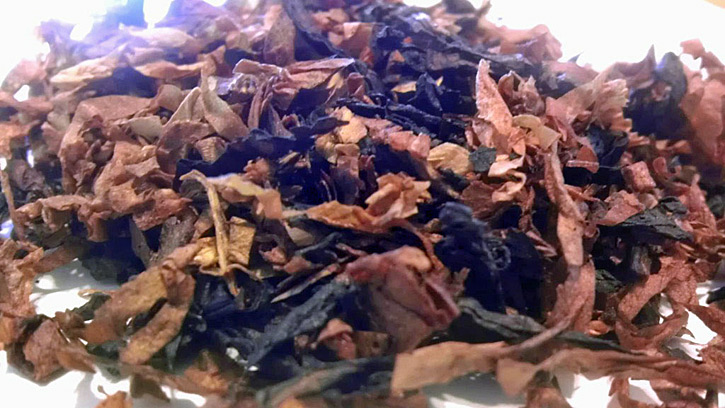
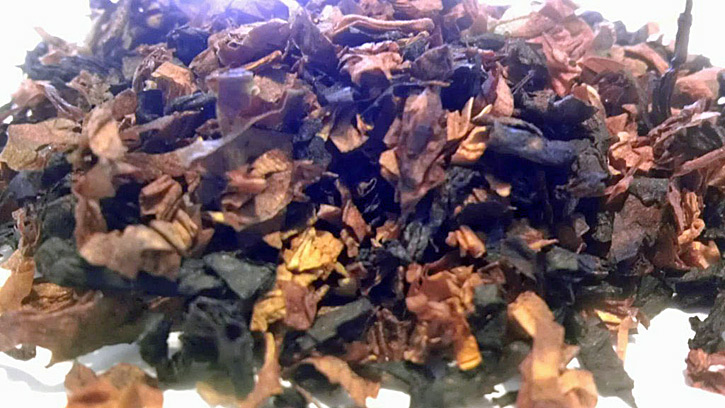
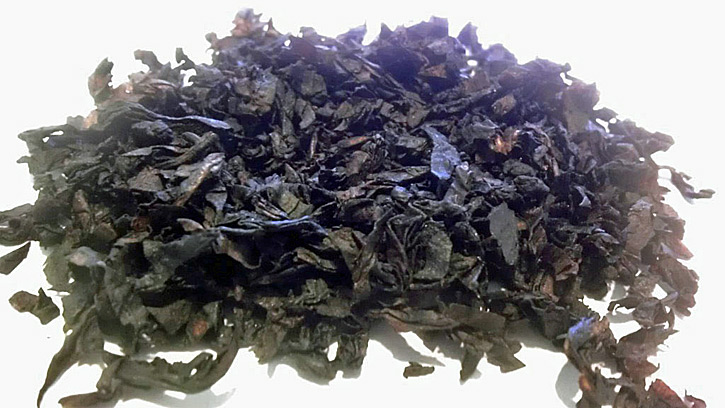

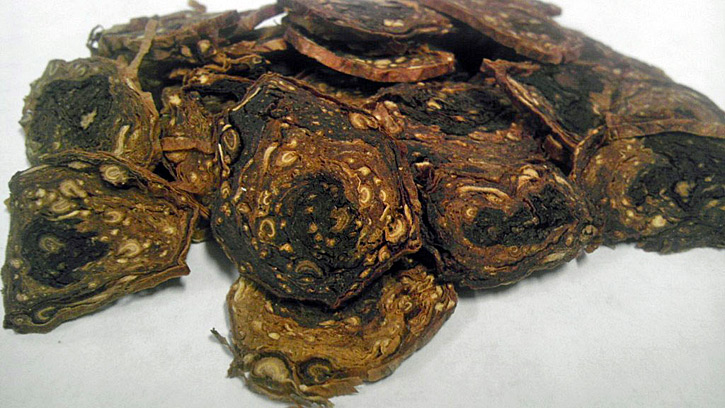
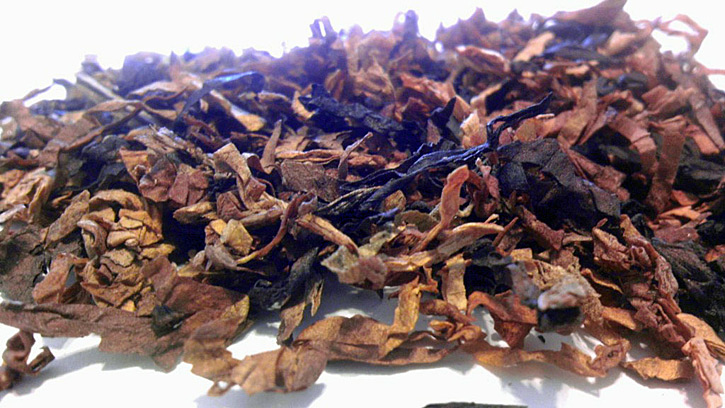
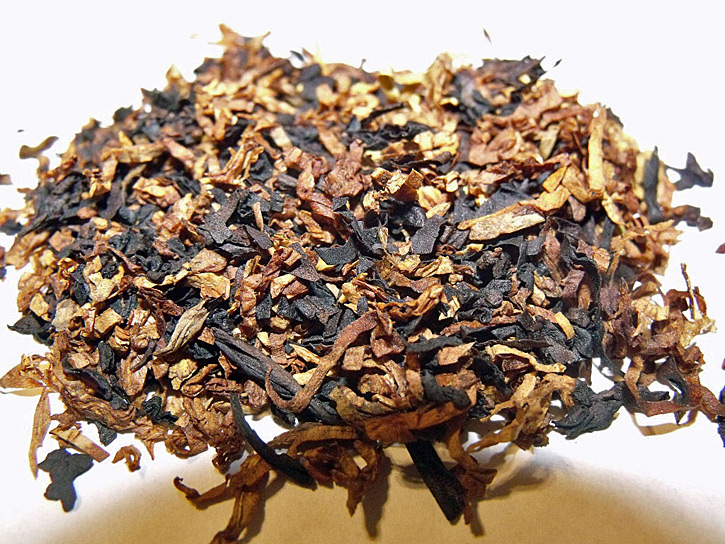
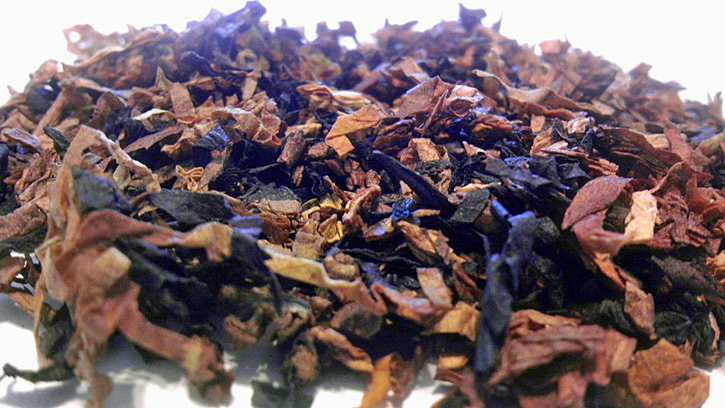













Thanks for the reviews! I am really gonna have to try those Newminster Superior Round Slices. They look delicious!
(Somewhat off topic). You mentioned that breathing backwards hydrated the tobacco a bit (which has been my experience also with dry tobaccos). I’m curious to know if there has ever been any attempt to measure the moisture content before and after that treatment — for that matter, before and after drying for 30 minutes pre-smoking. Are we really making much difference?
Great reviews! Might have to give Ultimate English a try. Too bad they didn’t come up with a substitute for the out-of-production Balkan Supreme that Stokkebye used to sell.
Those are some really great reviews.
As an Aro smoker, I’m going to have to give the Danish Black a try.
I really liked The English Orient. It’s probably my favorite of the few I’ve tried. I’ve never had any “MacBaren Bite”. Their HH Mature VA is one of my favorites and I’ve had most of the 7 Seas Line.
Great review… I have been enjoying the English Luxus and Ultimate English for about two months now. I also tried the Creamy Peaches, which I enjoyed better than Sutliffe’s Taste of Summer.
Wow! I don’t know how this tour de force survey of what, eight tobaccos? remained under my radar for almost two weeks! Excellent job as usual Schmitzy — of the two blends here that I have already tried, I’d say you nailed the reviews perfectly. Good palate, my man!
Dang! Once again I forgot to credit the fine photography included with this article. That can be so important — not to embellish the graphic presentation, which it does — but to give the prospective buyer some sense of the color and cut of the leaf. Good job all the way around.